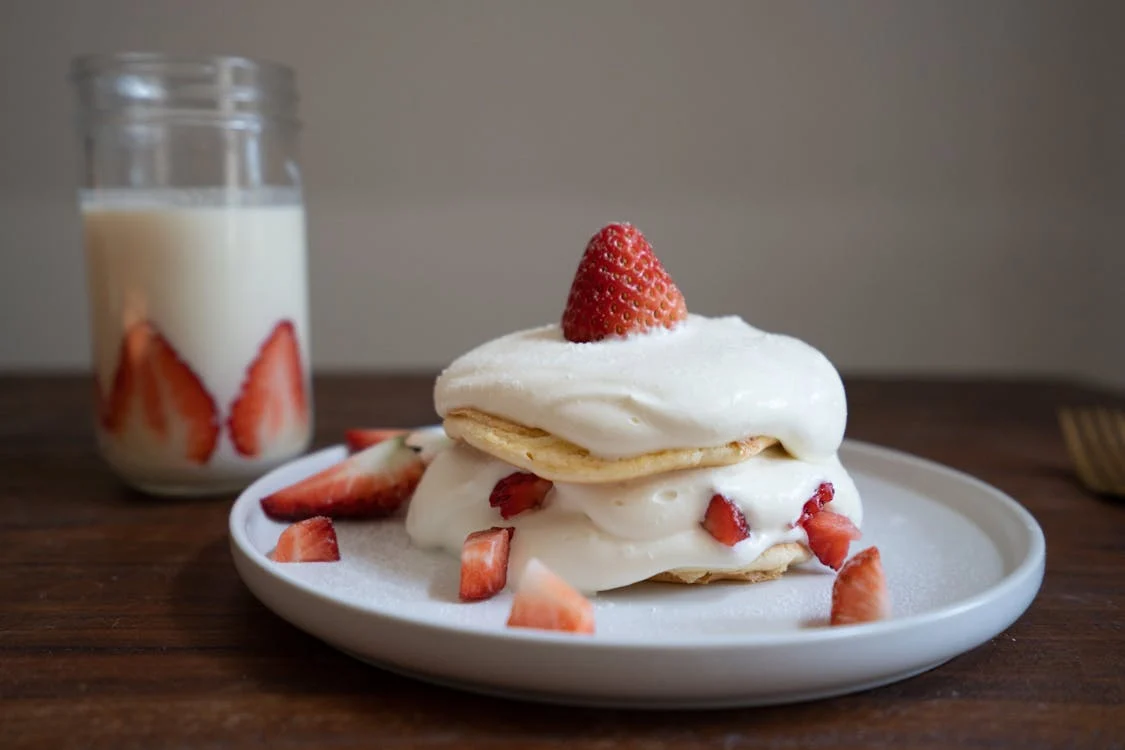There’s something irresistibly comforting about biting into a warm, fluffy pancake. Light and airy on the inside, with a golden-brown exterior—it’s a breakfast classic loved around the world. But what exactly makes pancakes so fluffy? Is it just about following a recipe, or is there a science behind it? Expert chefs share their insights on the key elements that transform basic pancake batter into soft, pillowy perfection. Let’s break down the science, along with some pro tips.
1. Leavening Agents: The Power of Bubbles
At the heart of every fluffy pancake lies the power of leavening agents. These are the ingredients responsible for creating the gas bubbles that give pancakes their airy texture.
- Baking Powder: Baking powder is a common leavening agent in pancakes, a combination of baking soda and a mild acid like cream of tartar. When mixed with liquid, it produces carbon dioxide gas. This gas gets trapped in the batter, causing it to rise and create that light texture.
- Baking Soda: Used less often than baking powder, baking soda requires an acid (such as buttermilk or lemon juice) to activate. The combination creates a chemical reaction that releases carbon dioxide, leading to fluffier pancakes.
- Pro Tip: To get maximum rise, let the batter rest for 5-10 minutes after mixing. This allows the leavening agents to fully activate, and the batter to slightly thicken.
2. The Role of Eggs: Structure and Lift
Eggs play a dual role in pancake batter—they add structure and moisture, while also contributing to fluffiness. The proteins in the egg whites create a framework that traps air, giving pancakes a lift when cooked.
- Whipping Egg Whites: Some chefs take fluffiness to the next level by whipping the egg whites separately and then gently folding them into the batter. This technique adds extra air into the batter, ensuring the pancakes rise even more while cooking.
- Pro Tip: Don’t over-mix the batter when folding in whipped egg whites. Gently fold, leaving some streaks of egg white visible. Over-mixing can collapse the air bubbles, reducing fluffiness.
3. Acidic Ingredients: Buttermilk and Beyond
Adding an acidic ingredient to the batter, like buttermilk or yogurt, enhances the chemical reaction with the baking soda, leading to fluffier pancakes. Buttermilk also brings a pleasant tanginess that balances the sweetness of pancakes.
- Pro Tip: If you don’t have buttermilk on hand, you can make a substitute by adding a tablespoon of vinegar or lemon juice to a cup of milk. Let it sit for a few minutes, and you’ve got a quick buttermilk alternative.
4. The Right Flour: It’s All About Protein
The type of flour you use affects the texture of your pancakes. All-purpose flour is commonly used for its balance of structure and softness. However, low-protein flours, such as cake flour, can yield even softer, lighter pancakes because they produce less gluten.
- Gluten Development: When flour is mixed with liquid, gluten forms. While gluten gives structure to baked goods like bread, too much can make pancakes dense and tough. The goal is to develop just enough gluten to hold the pancake together, but not too much that it becomes chewy.
- Pro Tip: Mix the batter gently and stop as soon as the ingredients are combined. A few lumps are okay. Over-mixing the batter activates the gluten too much, which can make your pancakes tough.
5. Temperature Control: The Perfect Griddle
Temperature plays a significant role in achieving fluffy pancakes. If the pan is too hot, the outside will brown too quickly, and the inside will remain undercooked. Too cool, and the pancakes will become dense and pale.
- Preheat the Pan: Expert chefs recommend preheating the griddle or pan to medium heat. It should be hot enough that a drop of water sizzles on contact but not so hot that it smokes.
- Pro Tip: Cook pancakes over medium-low heat for an even cook. Flip only when bubbles form on the surface and the edges look slightly set.
6. The Liquid-to-Flour Ratio: Keep it Balanced
The right liquid-to-flour ratio in pancake batter is crucial for achieving the perfect texture. Too much liquid will result in thin, flat pancakes, while too little can make them dense and doughy.
- Pro Tip: Aim for a batter that is thick but still pourable. If it feels too thick, add a little more liquid, like milk or buttermilk, one tablespoon at a time until the desired consistency is reached.
7. Resting the Batter: A Simple Yet Overlooked Step
One of the most overlooked tips for making fluffy pancakes is letting the batter rest for a few minutes before cooking. This allows the flour to hydrate fully and the gluten to relax, resulting in a more tender pancake.
- Pro Tip: Rest the batter for at least 5-10 minutes. This also gives the baking powder time to work its magic and release gas bubbles, making the pancakes rise higher.
8. Fat: Butter vs. Oil
Fat, such as butter or oil, adds richness and moisture to pancakes. Butter, in particular, adds flavor, but oil can make pancakes lighter since it doesn’t solidify when cooled.
- Pro Tip: Use melted butter for flavor, but consider using a small amount of oil in the batter if you want a lighter texture. Balancing both can give you fluffy pancakes with a rich, buttery taste.
Conclusion: The Perfect Stack
Fluffy pancakes are a result of careful attention to the chemistry of the ingredients and the techniques used. By understanding the roles of leavening agents, eggs, acids, and gluten development, you can elevate your pancake game to new heights. Expert chefs emphasize gentle handling of the batter, proper heat control, and the right balance of ingredients. So the next time you’re flipping pancakes, keep these scientific tips in mind to achieve that perfect, cloud-like stack every time!

